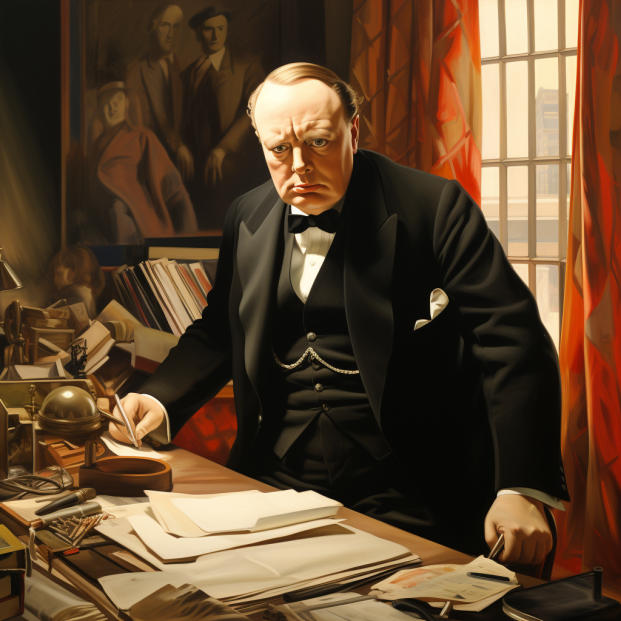Walt Disney and the Disney Laugh-O-Gram Studios

Failure can only be seen as glorious once you have the benefit of hindsight.
Try telling someone who has just fallen on their face with something that they have dreamt of doing all their life that this is best thing that happened to them and you are likely to get a fairly sharp response.
Tell them that again when they have picked themselves up, dusted themselves off and started again with positive results…and you’ll get a different reaction.
What is interesting about stories of failure, is they only become a story of failure which fuels success once that next success has been reached. Before that, they are just another Joe with a bad luck story.
Take the story of Walt Disney, one of the world’s greatest creative entrepreneurs, and his first failed venture…Walt Disney’s Laugh-O-Gram Studio, a significant chapter in Walt Disney's life.
Disney Laugh O Gram Films in Kansas City
- Walt Disney founded Laugh-O-Gram Studio in 1921, at the age of 20, in Kansas City, Missouri.
- Before the inception of the studio, Disney worked at the Pesmen-Rubin Art Studio and later created advertisements for newspapers, magazines, and movie theaters at the Kansas City Slide Company (later known as the Kansas City Film Ad Company), where he also produced silent films.
- Laugh-O-Gram Studio was Walt’s early venture into the business of animation and film production, focusing on animated fairy tales.
- The initial concept was to create a series of fairy tales that mixed live-action with animation — a novel and exciting idea at the time. Disney decided to pursue this ambitious project despite the risks, aiming to parody fairy tale classics and create fairy tale cartoons.
Walt Disney’s Notable Creations
- Little Red Riding Hood (1922): This short film blended live-action and animation, demonstrating Disney’s early innovative spirit and is considered his first fairy tale cartoon.
- Newman Laugh-O-Grams: A series of short films that presented stories in a comic, modernized fairy tale setting. Frank Newman played a crucial role in producing the series.
- Alice’s Wonderland (1923): Arguably the most significant work from Laugh-O-Gram Studio which became the prototype for Disney’s subsequent “Alice Comedies” series. Although the film did not save Laugh-O-Gram from financial ruin, it played a crucial role in the next chapter of Disney’s career.
- Although the idea was promising and the studio produced a few shorts, it was plagued by financial issues from the outset. The environment at the studio also inspired the creation of Mickey Mouse.
- Walt was an imaginative creator but found himself in uncharted waters when it came to managing a business and its finances.
- Laugh-O-Gram Studio declared bankruptcy in 1923, marking a significant professional setback for Walt Disney.
- However, it wasn’t the end of Disney’s animated aspirations. With the lessons learned from the bankruptcy, Walt Disney left Kansas City for Hollywood, California, where he and his brother, Roy O. Disney, co-founded The Walt Disney Company.
Key Takeaways from Walt Disney and Laugh-O-Gram Studios
- Innovation and Risk-Taking: Walt’s early experiments in animation and film showcased his willingness to innovate and take creative risks, vital traits for any leader or entrepreneur.
- Learning from Failure: The failure of Laugh-O-Gram Studio became a formative experience for Walt Disney, informing his later triumphs with better business and financial management strategies.
- Persistence and Vision: Despite the bankruptcy, Disney never abandoned his love for animation and storytelling, which eventually led to the creation of one of the most iconic entertainment companies in the world.
- Support from Disney Family: The Disney family has pledged $450,000 in matching funds to support the restoration and preservation of the Laugh-O-Gram Studio. This effort, led by the non-profit group 'Thank You Walt Disney,' aims to raise additional funds to preserve this historic site.
Walt Disney’s experience with Laugh-O-Gram Studio encapsulates an essential narrative about the intertwining paths of failure and success, and how early setbacks can forge the resilience and wisdom necessary for future accomplishments.
1. Transform Failures into Stepping Stones:
- Walt Disney converted a seemingly disastrous event into a stepping stone by viewing the bankruptcy not as a dead-end but as a push toward new opportunity. This illustrates that a positive mindset can transform failures into opportunities.
- It takes a strong mind and a strong stomach to start the same business again – but you have to get beyond seeing something as a failure and instead see it as another way not to do something.
2. Perseverance and Continuous Pursuit:
- Despite experiencing demoralizing financial and professional setbacks, Walt Disney continued to pursue his passion for animation, demonstrating the critical leadership trait of perseverance.
- He didn’t give up, he had absolute faith that the animation would work but the business side of things needed more experience.
3. Leveraging Learning from Failures:
- Disney took the failures and mistakes from Laugh-O-Gram to refine his subsequent business ventures, particularly regarding the setup and financing. This indicates the importance of extracting learnings from setbacks to avoid repeating them in the future.
- Whenever you fail, it’s not enough to blindly start again, you have to understand what went wrong and own the parts of it that are directly attributable to you.
4. The Significance of Financial Management:
- The financial missteps at Laugh-O-Gram Studio underscored the crucial role of sound financial planning and management in sustaining a business. Businesses often fail, not because they aren’t financially viable, but because they have run out of cash and the creditors come calling.
- As a business leader or entrepreneur, even if your head is in the creative, you must prioritize and manage the financials diligently.
- Relocation and Adaptation:- The move to Hollywood became pivotal to Walt Disney’s career. Sometimes, adaptation and change of location or strategy can be essential to finding the right environment and opportunities for business success.
- It highlights the adage we like to tell our kids, if at first you don’t succeed…try, try again.
Concluding Thoughts on Animated Fairy Tales
Walt Disney’s journey from the bankruptcy of Laugh-O-Gram Studio to the foundation of the Walt Disney Company presents a riveting tale of turning a setback into a springboard for future success.
His ability to perceive failure not as a downfall but as a fountain of lessons and a catalyst for new adventures offers a profound perspective for leaders navigating through their own professional and organizational challenges.
Reflection Point
What have been the lowest points in your career or business?
How might your setbacks and failures pave the way for unexpected opportunities and learnings?
Do you know how long your hindsight window is? How long does it take you to go from a failure to a story about how that failure spurred you on?
How can a strategic pivot, both in mindset and location, spawn a world of new possibilities for you and your endeavors?



